Property Calculation MethodsIn Formpak, calculation methods are used to help define the logic of calculated properties. There are many calculation methods pre-loaded in Formpak, each providing different methods for calculating properties. The calculation method of a property can be found on the ‘Calculation’ tab of a property:  You can see more details of a calculation method in ‘View a Property Calculation Method’. This includes information such as the ‘Calculation Source’ and ‘Value Type’ required for the calculation method and ‘Rule Template’ which is the script used the run the calculation for the property. There is also a description to explain the logic of the calculation method. PLEASE NOTE: We do not advise you make changes to property calculation methods. This could result in incorrection calculation or properties or failed property calculations, preventing other areas of the software functioning properly. Some of the commonly used property calculations include: Accumulation  The ENERGYC value of an item will be the total sum of the ENERGYC value for all components in it’s regulatory composition. All  If all components in an item’s physical composition have the ORGANIC property, then the value of ORGANIC for the focus item will equal ‘Yes’. Any  This property is used to indicate if an item contains any components prohibited by IFRA (International Fragrance Association) as per the 49th amendment of the IFRA Standards. Ingredient Disclosure  This property lists all components from the regulatory component of the item that have the ‘AGN’ property. This is used to list all the cosmetic allergens contain in an item. There are also variations for the ‘Ingredient Disclosure’ calculation method including:
Non Cumulative (Percent only)  This will look at the IFRACA03 limit for each relevant component in its regulatory composition and use most limiting factor as the IFRACA03 value for the focus item. For example, if a component had a limit of 1%, another a limit of 2% and another a limit of 3%. The non-cumulative limit is 1% (the most restrictive of potential limits). The ‘Non Cumulative’ calculation method works in the same way but requires a ‘Percent and TFV’ value type.
|
|---|





















